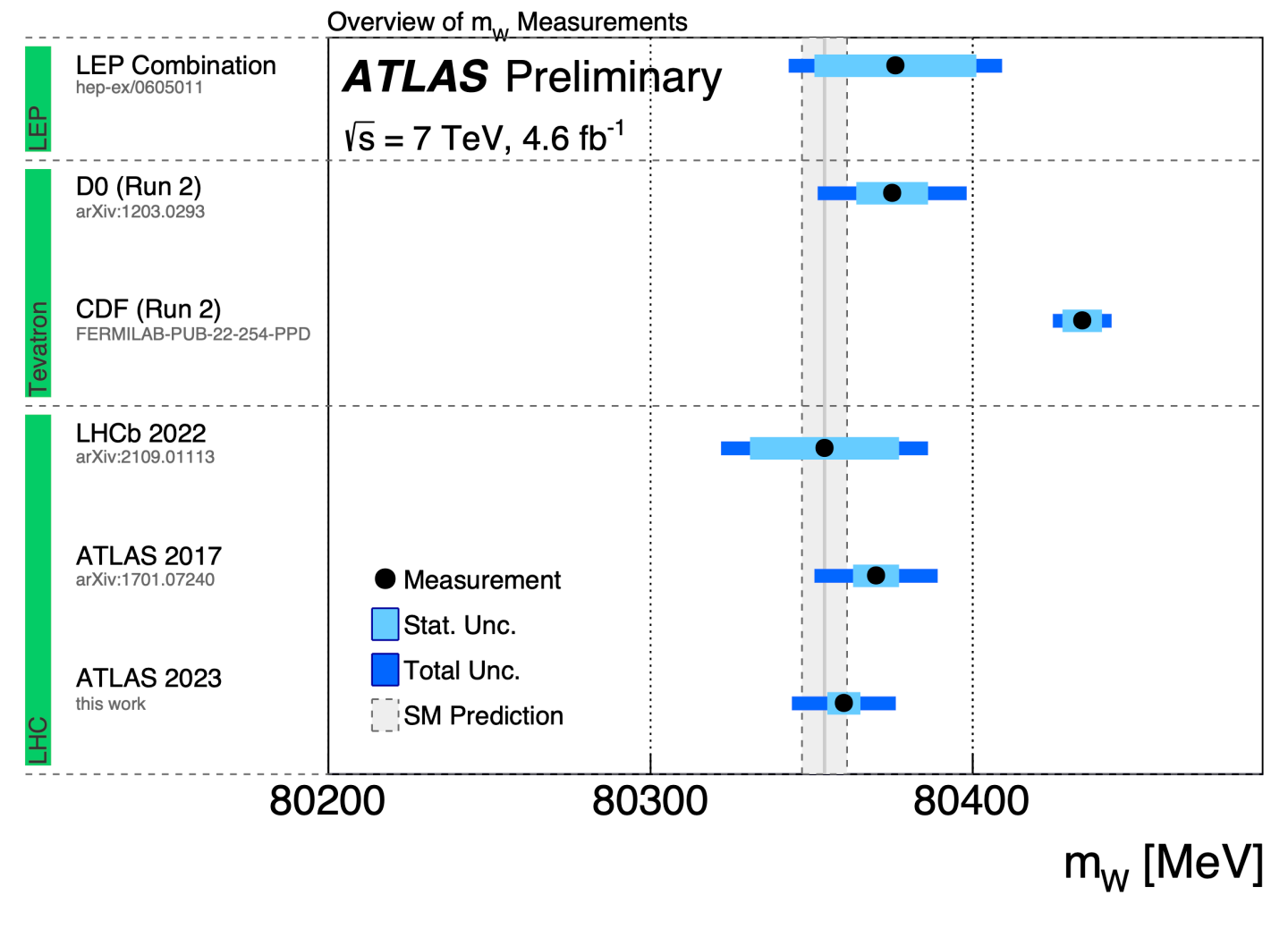ATLAS releases an improved measurement of the mass of the W boson

The W boson is a fundamental particle that carries the charged weak force. Its mass is primarily given through the interactions with the Higgs field, however it is also affected by the existence of other heavy particles such as the top quark and the Higgs boson through “loop corrections”. If new particles exist, a direct measurement of the W boson mass might deviate from the Standard Model prediction, leading to the indirect discovery of new physics. To be sensitive to such deviations, the W boson mass needs to be measured with amazingly small uncertainties, of the order of 0.01%.
High energy hadron colliders, such as the TeVatron (operated until 2011) and the LHC (taking data since 2010) produce W bosons in large quantities. The measurement focuses on W boson decays into an electron or a muon, and a corresponding neutrino. The presence of the neutrino complicates the measurement significantly and requires a detailed theoretical understanding of W production and decay. In 2017, the ATLAS Collaboration published its first measurement of the W-boson mass at a value of 80370 MeV with an uncertainty of 19 MeV, at that time the most precise single-experiment result. Last year, the CDF Collaboration at Fermilab created a lot of excitement by publishing a measurement with an unprecedented 9 MeV uncertainty that was in significant tension with the Standard Model prediction at a central value of 80434 MeV.
ATLAS’ new measurement released now for the annual Moriond conference uses the same data set as in the previous publication. It improves the analysis techniques to constrain the uncertainties to 16 MeV. Liverpool senior lecturer Jan Kretzschmar led the work to update the used parton distribution functions (PDFs) to newer sets thereby reducing one of the leading uncertainties. The proton PDFs model the momenta of the quark and gluon constituents and are determined with a multitude of data from different particle physics experiments. The updated measurement shifts to a slightly lower value of 80360 MeV and remains in excellent agreement with the Standard Model prediction.
In a CERN press release, the experiment spokesperson Andreas Hoecker commented: “This updated result from ATLAS provides a stringent test, and confirms the consistency of our theoretical understanding of electroweak interactions.” Further independent measurements of the W boson mass are expected from ATLAS and the other LHC experiments CMS and LHCb to clarify the experimental situation.

Figure: The new measurement of the W boson mass by ATLAS 2023 compared to the prior measurement using the same data set (ATLAS 2017) and other measurements (LHCb, CDF, D0, LEP combination). All results are compared to the Standard Model prediction.
Further reading: https://atlas.cern/Updates/Briefing/2023-W-Mass-Measurement
https://atlas.web.cern.ch/Atlas/GROUPS/PHYSICS/CONFNOTES/ATLAS-CONF-2023-004/